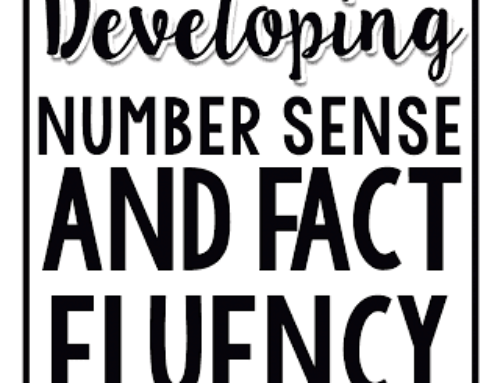I am lucky to work in a
district that believes in using rubrics and standards based reporting. We
are given a pacing calendar of everything that must be taught in a quarter.
However, not everything has to be formally reported on the report card. In grades k-3 we score
on scale of 1 (limited progress), 2 ( making some progress) or a 3 (mastery).
Teachers are given a rubric that describes exactly (for the most part)
what is a 3 in each area. For example, exactly what is a 3 in addition and subtraction. It is a blessing.
district that believes in using rubrics and standards based reporting. We
are given a pacing calendar of everything that must be taught in a quarter.
However, not everything has to be formally reported on the report card. In grades k-3 we score
on scale of 1 (limited progress), 2 ( making some progress) or a 3 (mastery).
Teachers are given a rubric that describes exactly (for the most part)
what is a 3 in each area. For example, exactly what is a 3 in addition and subtraction. It is a blessing.
I have taken the rubric
and turned it into a Daily Math Page (creative name, I know!!). I look at
the rubric and divided a page into the same amount of text boxes. Each
text box is an area on the report card. Students get a packet for the
week and complete one page each independent period (usually 3-4 times per
week). The last page of the packet is a copy of the report card rubric. I
grade each text box with a 1,2, or 3 (since each text box is a different
area in math) and then score the rubric at the end.
and turned it into a Daily Math Page (creative name, I know!!). I look at
the rubric and divided a page into the same amount of text boxes. Each
text box is an area on the report card. Students get a packet for the
week and complete one page each independent period (usually 3-4 times per
week). The last page of the packet is a copy of the report card rubric. I
grade each text box with a 1,2, or 3 (since each text box is a different
area in math) and then score the rubric at the end.
Here is an example of the page:
While I do record the
grades to show progress I will NOT average the scores together for the
report card at the end of the nine weeks. Our district believes (as I do)
in reporting what the child is able to do at the END of the grading period
rather than averaging scores. Averaging scores punishes the
child that might take a bit longer to master a skill but still mastered
it at the end of the grading period. I am recording more to note if
students do or do not retain skills. THAT is always enlightening!
grades to show progress I will NOT average the scores together for the
report card at the end of the nine weeks. Our district believes (as I do)
in reporting what the child is able to do at the END of the grading period
rather than averaging scores. Averaging scores punishes the
child that might take a bit longer to master a skill but still mastered
it at the end of the grading period. I am recording more to note if
students do or do not retain skills. THAT is always enlightening!
Granted, I have only
done this system for a week but I already love it! It shows VERY clearly
for parents the child’s weaknesses in math- more so than random worksheets with
each worksheet being a different topic. Parents can really see the big
picture.
done this system for a week but I already love it! It shows VERY clearly
for parents the child’s weaknesses in math- more so than random worksheets with
each worksheet being a different topic. Parents can really see the big
picture.
I will say that many of
the skills we teach are recycled so it is easy to do this. Whatcha think?
the skills we teach are recycled so it is easy to do this. Whatcha think?
About ready to get your shop on??? Tons of great deals Monday and Tuesday!!!
Mandy Gregory is a 2007 and 2012 Teacher of the Year. She has taught Kindergarten- 4th grades in both the general education and inclusion settings. She is currently a 1st grade Special Education teacher. She is the owner and creator of Mandy’s Tips for Teachers website (www.mandystipsforteachers.com) and has over 13 years of teaching experience. She is married with two beautiful children.








LOVE LOVE LOVE. My district does not have a standardized report card or pacing guide. Your Daily Math would be awesome to keep track of individual skills. I totally agree with your district's (and your) belief that we should count what a child is able to do at the END. Hopefully my district will get it together! I am really wanting a pacing guide to help with all of the Common Core. I want to teach purposefully, not randomly. Thanks for this freebie! You rock.
Whatcha think? I think I LOVE! May be copying come third quarter!
You are very lucky to be working in a district that views assessment in this way. Love your take on keeping track of everything!!
Our district assessments are similar to yours, except we do have a 4, which is working above grade level. I'd love to see how you develop this for the week and the "report" at the end. I might do something similar next year. But we need to watch our copies, so I'm not sure how to reconcile the usefulness of this and the copies it will take!
I'd love to have it!!
Are you making more??
Love this! Are you posting these on TPT?
Hey Jess!
The plan is to post them…some day! Hopefully sooner rather than later! I would like to actually use them in my classroom first to give them a "test drive" before posting. This makes it slow going for sure! mM thought is to post in chunks (a few weeks at a time).
Thanks so much!
Mandy
Thank you for this wonderful resource. It will be so valuable for so many……appreciate the blood, sweat, and tears going into it…..